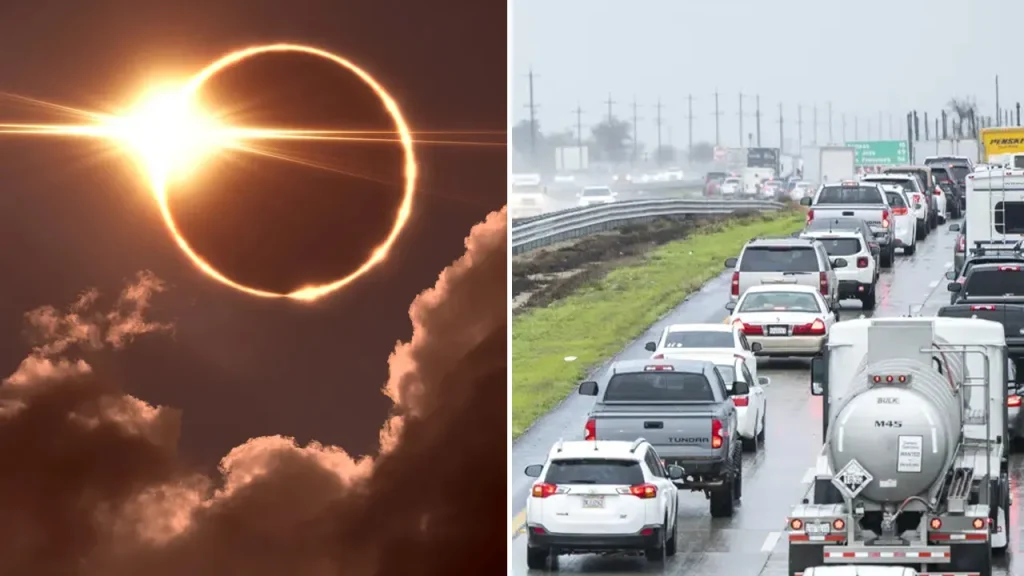Millions of Americans in the path of totality, from Texas to Maine, will have the rare opportunity to witness the alignment of the sun, the moon, and the Earth in a North American solar eclipse on April 8. The eclipse is expected to last up to four minutes and will be a once-in-a-lifetime event, as another similar eclipse will not occur until 2044. Due to the significance and rarity of this occurrence, schools across the country are taking precautions by either closing for the day or adjusting schedules to minimize traffic congestion and ensure the safety of students, parents, and staff.
Some schools, like Livingston Public Schools in New Jersey and Hays Consolidated Independent School District in Texas, have opted for early dismissal or a complete closure on eclipse day. Safety concerns related to traffic control, crowd management, and potential emergency situations have prompted these decisions. In Dallas, Texas, a city in the line of totality, officials are advising all drivers to be cautious and avoid driving during the eclipse. The North Texas Tollway Authority has suggested that the public observe the eclipse from off-road locations and not attempt to drive or park on roadways to view the event, as it may lead to dangerous conditions and traffic congestion.
Preparations for the eclipse involve increased staffing on roadways, roadway messages on electronic boards warning of potential traffic issues, and increased patrolling across tollway systems to respond to incidents promptly. The popularity of the eclipse has led to a surge in car rental reservations in Dallas, with rural, non-freeway routes experiencing significant traffic congestion during previous eclipses. AAA has provided safety tips for drivers, such as keeping headlights on, pulling down the sun visor, and avoiding the use of eclipse glasses while driving. It is essential for drivers to stay at their eclipse-viewing locations after the event to avoid rush-hour traffic and have emergency kits prepared in case of any unexpected emergencies.
Aixa Diaz, a spokesperson for AAA, emphasized the importance of preparation and staying longer at viewing locations after the eclipse to avoid traffic congestion. She advised travelers to have emergency kits with water, snacks, a first-aid kit, and a phone charger. Other safety tips include filling up the gas tank before the eclipse, not photographing or videotaping the event while driving, and avoiding pulling over on the side of the road to view the eclipse. Drivers are urged to exit the roadway and park in a safe area away from traffic to ensure everyone’s safety. Additionally, it is crucial to protect one’s eyes and vision during the eclipse by wearing specialized eye protection for solar viewing, except during the brief total phase when the moon completely blocks the sun.
Overall, the upcoming solar eclipse on April 8 is a highly anticipated event that will offer a unique viewing experience for millions of Americans. However, the significance and rarity of the event have prompted schools and officials across the country to take precautions to ensure public safety and minimize traffic disruptions. By following safety guidelines, such as avoiding driving during the eclipse, staying at viewing locations afterward, and having emergency kits prepared, individuals can enjoy the celestial event while prioritizing their well-being and the safety of others.


